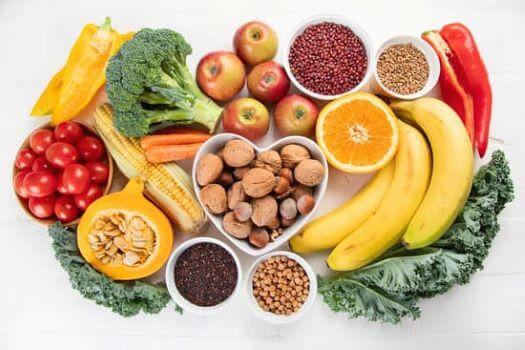
January 18, 2017 2 min read
While the common denominator is that neither type of fiber is absorbed by the body, the difference lies in their varying properties when either type is mixed with water. Here we can look at how each type of fiber consumption can benefit the body.
What Is Soluble Fiber?
As the name indicates, soluble fiber dissolves in water. When mixed with water, fiber forms a gel-like substance and swells. This feature of gelling slows down digestion and delays the emptying of the stomach. As a result, an individual will feel fuller longer which is why incorporating soluble fiber into the diet can assist in weight management.
At the same time, gradual stomach emptying may also be beneficial in regulating blood glucose levels and have a positive effect on controlling diabetes. Soluble fiber is also known to lower LDL blood cholesterol by inhibiting the assimilation of dietary cholesterol.
Some good sources of soluble fiber include oats, oatmeal, barley, flax seeds, legumes, fruits, and vegetables.
What Is Insoluble Fiber?
Insoluble fiber, on the other hand, neither absorbs nor dissolves in water. Instead, it passes through the digestive tract relatively intact and speeds up the movement of food through the digestive tract. Insoluble fiber is particularly effective in promoting intestinal health, triggering a laxative effect. Concerns like regulating constipation and reducing the risk of hemorrhoid occurrence may be addressed effectively by introducing more insoluble fiber into the diet.
In addition, insoluble fiber also adds bulk to the diet.
Most of the insoluble fiber is acquired from whole grains, the bran layers of cereal grains, and some vegetables. Some good sources include whole wheat, wheat bran, couscous, bulgur, brown rice, and corn bran. Among vegetables, insoluble fiber may be sourced from zucchini, celery, broccoli, green beans, and an assortment of leafy vegetables.
Unless there are health concerns involved, including a variety of fiber-rich foods into the diet is always a good idea, regardless of the type of fiber. For individuals trying to meet certain medical criteria, doctors may recommend one or the other type of fiber, based on individual needs.
❤ Try our USDA certified organic products ❤
Related Blogs:
Thanks for reading this Be Still Farms Blog article. To sign up for more news/articles and/or recipes, click here. For more about us, click here. To shop our certified organic products, click here.
Please comment and share and we look forward to serving you in the future!
Comments will be approved before showing up.

October 21, 2024 2 min read
Making hulless barley flour at home is a simple and rewarding process that adds a nutritious, fiber-rich ingredient to your pantry. In just a few steps, you can grind your own fresh flour, perfect for baking, thickening soups, or enhancing smoothies. Learn how to clean, grind, and store your homemade hulless barley flour with this easy guide!

October 11, 2024 4 min read
Looking for a nutritious, plant-based meal that's easy to prepare? Millet and Veggie Stir-Fry combines the nutty goodness of hulled millet with vibrant vegetables for a healthy, flavorful dish. Packed with fiber, protein, and essential nutrients, this stir-fry is perfect for lunch or dinner. Customize it with your favorite veggies or add plant-based protein for a satisfying and versatile meal that supports your wellness goals!

October 07, 2024 4 min read
Great Northern Beans are a weight-loss powerhouse—low in calories, rich in fiber, and packed with plant-based protein. These versatile beans help you stay full longer, regulate blood sugar, and are easy to incorporate into soups, salads, dips, and more. Discover how this pantry staple can support your weight-loss goals while keeping meals delicious and nutritious!
© 2024 Be Still Farms- Real, Fine Organics.
Privacy | Terms | Refund Policy | Organic Certification
